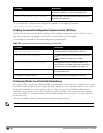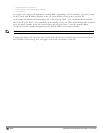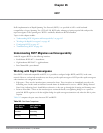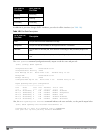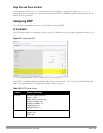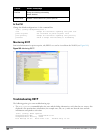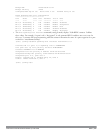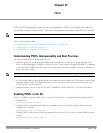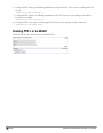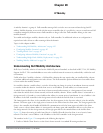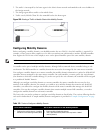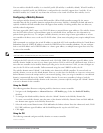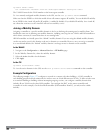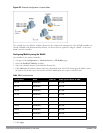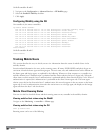
DellPowerConnectW-SeriesArubaOS6.2 | User Guide PVST+ | 490
Chapter 27
PVST+
PVST+ (Per-VLAN Spanning Tree Plus) provides for load balancing of VLANs across multiple ports resulting in
optimal usage of network resources. PVST+ also ensures interoperability with industry accepted PVST+ protocols.
NOTE: PVST+ is disabled by default.
Topics in this chapter include:
l "Understanding PVST+ Interoperability and Best Practices" on page 490
l "Enabling PVST+ in the CLI" on page 490
l "Enabling PVST+ in the WebUI" on page 491
Understanding PVST+ Interoperability and Best Practices
The interoperability between RSTP and PVST+ are:
l When the access port on the controller and the trunk port terminate on one Layer 2 switch running PVST+,
PVST+ will send untagged STP BPDUs on the access port; it also transmits untagged STP BPDUs (in addition
to the other PVST+ BPDUs) on the native VLAN trunk port. If the Dell controller is the root, it will detect a
loop on the native VLAN.
NOTE: If PVST+ is not on the controller, best practices recommends disabling RSTP on the Dell controller to avoid a looping issue.
l For VLAN load balancing when Dell controllers are connected to armed mode, the VLAN priorities on two ports
and bridge priorities must be configured so that one set of VLANs are active on one link and the other set of
VLANs are active on the other link.
l Supported instances are 64 on the W-7200 Series, W-6000M3, and W-3000 Series; 32 on the W-600 Series.
Enabling PVST+ in the CLI
PVST+ is disabled by default. Enable PVST+, ensure a VLAN instance is configured, and then configure PVST+.
1. Enable PVST+:
spanning-tree mode rapid-pvst
2. Configure PVST+ forward time; the following command sets the time VLAN 2 spends in the listening and
learning state (3 seconds).
spanning-tree vlan 2 forward-time 3
3. Configure PVST+ hello time; the following command sets the time VLAN 2 waits to transmit BPDUs to four
seconds:
spanning-tree vlan 2 hello-time 4



